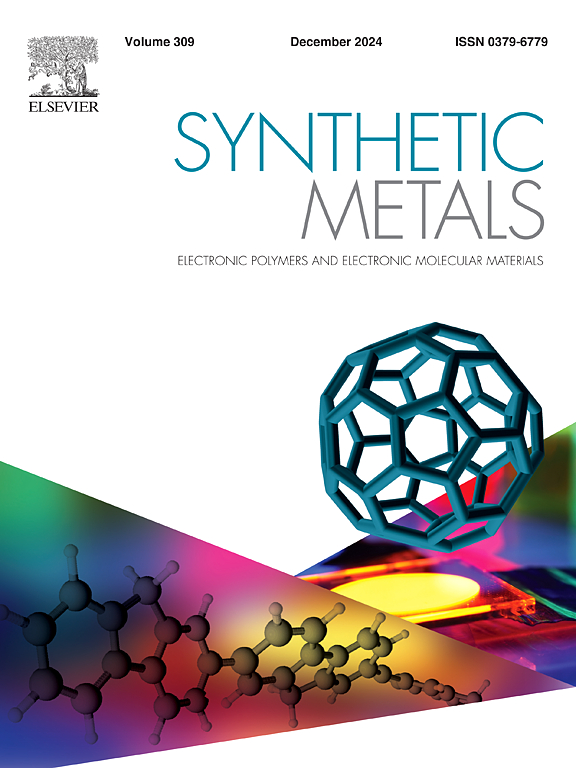Asymmetric main-chain twisted small molecules for efficient polymer solar cells
IF 4.6
3区 材料科学
Q2 MATERIALS SCIENCE, MULTIDISCIPLINARY
引用次数: 0
Abstract
Polymer solar cells (PSCs) based on small molecules with twisted backbones as electron acceptors, have many advantages over their planar counterparts, such as upshifted molecular energy levels, better charge extraction performance, enhanced extinction coefficient, extended carrier lifetime and reduced recombination rate, which are very helpful in improving the power conversion efficiencies (PCE). The present study was designed to synthesize two new small molecules with main-chain twisted structures that include an asymmetric electron donor core thiophene-phenylene-thieno[3,2-b]thiophene, namely i-T-TT and i-T-TT-4F, to investigate the “structure-property” correlation of main-chain twisted acceptors. Both asymmetric molecules exhibit bent geometric structures, and the fluorinated acceptor i-T-TT-4F possesses a more red-shifted spectrum, improved molar extinction coefficient, and deepened molecular energy levels. As a result, when combined with the middle bandgap polymer donor J52, there was a remarkable efficiency of 12.22 % for the device of i-T-TT-4F, higher than that of i-T-TT (9.51 %). Our research illustrates the importance of the main-chain twisted asymmetric electron-donating core and fluorinated end-capping group in the construction of efficient PSCs.
用于高效聚合物太阳能电池的不对称主链扭曲小分子
以具有扭曲骨架的小分子为电子受体的聚合物太阳能电池(PSCs)与平面太阳能电池相比具有许多优点,如分子能级上移、电荷萃取性能更好、消光系数增强、载流子寿命延长和重组率降低等,这些优点非常有助于提高功率转换效率(PCE)。本研究旨在合成两种新的具有主链扭曲结构的小分子,即 i-T-TT 和 i-T-TT-4F,它们包含一个不对称电子供体核心噻吩-苯基-噻吩并[3,2-b]噻吩,以研究主链扭曲受体的 "结构-性能 "相关性。这两种不对称分子都表现出弯曲的几何结构,而氟化受体 i-T-TT-4F 具有更红移的光谱、更高的摩尔消光系数和更深的分子能级。因此,当与中间带隙聚合物供体 J52 结合使用时,i-T-TT-4F 器件的效率显著提高,达到 12.22%,高于 i-T-TT(9.51%)。我们的研究说明了主链扭曲的不对称电子供体核心和含氟封端基团在构建高效 PSC 中的重要性。
本文章由计算机程序翻译,如有差异,请以英文原文为准。
求助全文
约1分钟内获得全文
求助全文
来源期刊

Synthetic Metals
工程技术-材料科学:综合
CiteScore
8.30
自引率
4.50%
发文量
189
审稿时长
33 days
期刊介绍:
This journal is an international medium for the rapid publication of original research papers, short communications and subject reviews dealing with research on and applications of electronic polymers and electronic molecular materials including novel carbon architectures. These functional materials have the properties of metals, semiconductors or magnets and are distinguishable from elemental and alloy/binary metals, semiconductors and magnets.
 求助内容:
求助内容: 应助结果提醒方式:
应助结果提醒方式:


